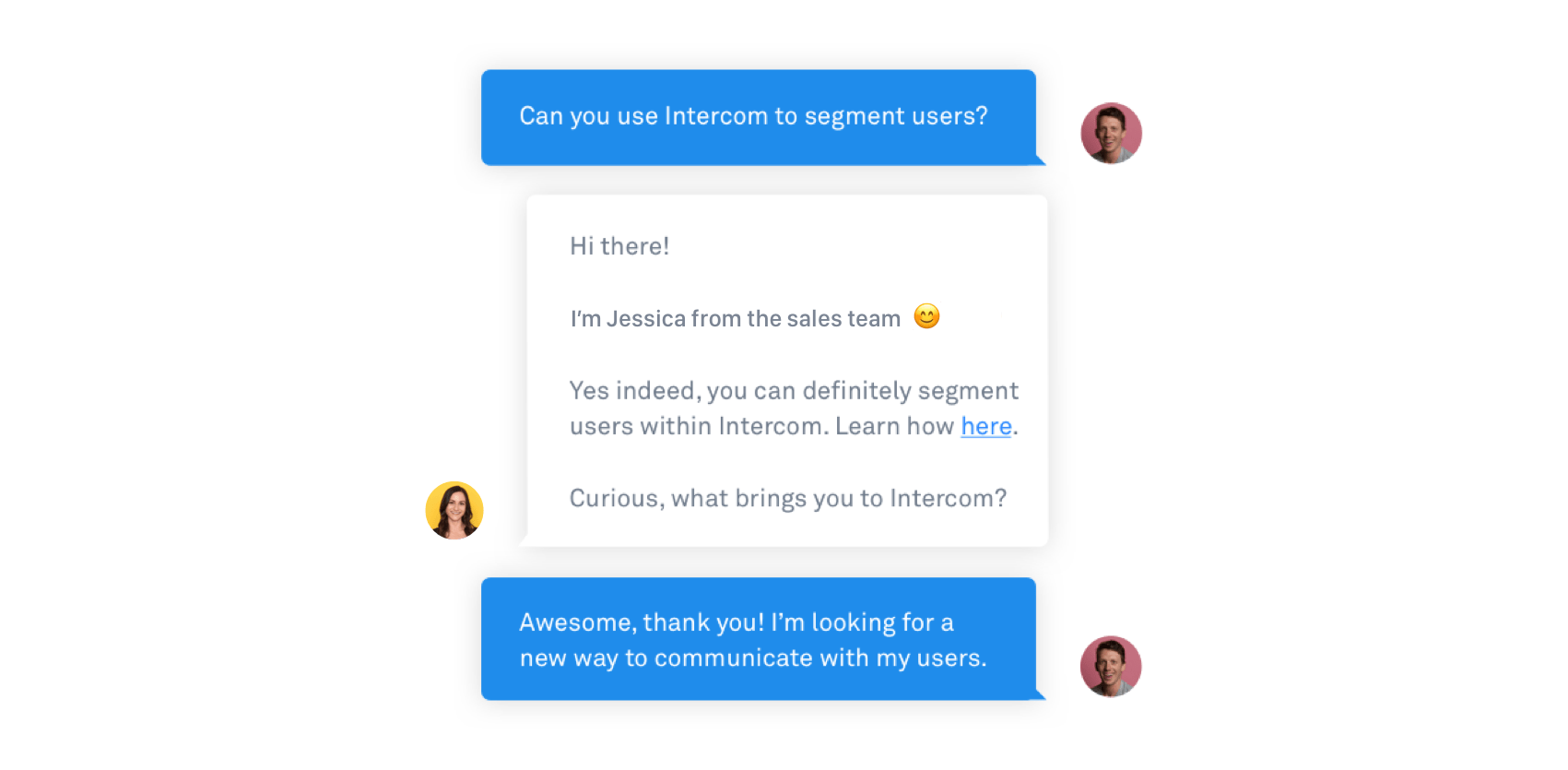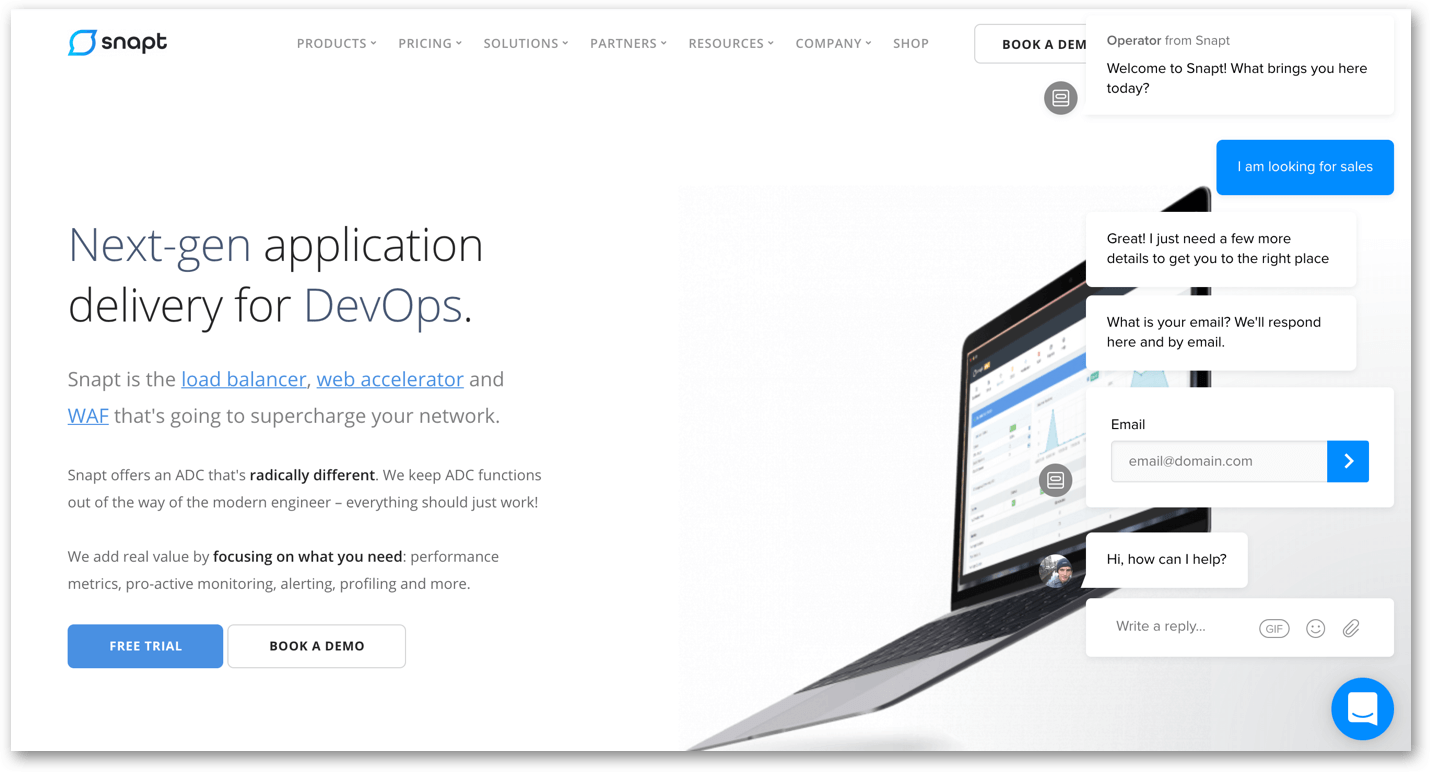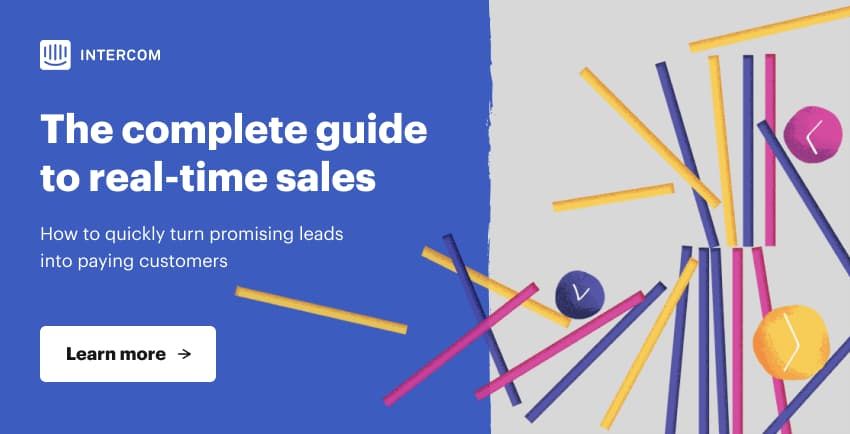
Building rapport: How storytelling helps you win over leads in live chat
Main illustration: Joshua Daniels
In sales, the ability to connect with leads in real time can’t be understated. Exchanging just six messages over live chat makes a visitor 250% more likely to become a customer.
But as powerful as live chat is, it has one challenge you also find in email and many other digital channels – if you can’t see or hear your leads, how do you quickly establish rapport with them?
“Stories help you build trust by communicating value in ways that people are known to respond to”
That’s what makes storytelling so impactful when you’re selling through live chat. Stories help you build trust by communicating your product’s value in ways that people are scientifically known to remember and respond to. For B2B buyers, having an emotional connection to a brand is paramount, and they’re willing to pay for it too.
I’ve talked to hundreds of leads over live chat, and in my experience, there are only three things you need to keep in mind to tell stories that sell.
3 steps to tell effective stories in live chat
1. Talk like a human, walk like a human
It’s easy advice to ignore and hard to nail, but it all starts here: embrace being human. Just because you’re talking through a computer screen, doesn’t mean you have to be robotic. More often than not, it’s the small things – a funny GIF, a well-placed emoji – that sets the stage for a personal and meaningful conversation with your prospect.
A great example is your opening line. Imagine you’re a lead writing in: would you rather be greeted with, “Hey there! I’m Jessica from the sales team 😊” or “Welcome to Intercom. Let me know how I can assist you.”? In the same way that all great stories invite the reader to dive deeper, adopting a conversational tone will encourage your lead to continue chatting.

2. Take a genuine interest in your prospect
In sales, our most valuable resource is our time. It’s the limiting factor for how many leads we can chat to and as a result, how quickly we’ll hit our quota. While it might be tempting to speed through your conversations with prospects, resist that urge. Only by taking the time to understand your prospect’s business can you craft a story that speaks to their needs and your product’s value to them.
The best place to start is with your qualification questions. I use them to gain a picture of how my leads currently work, their pain points and opportunities for Intercom to solve a real problem. For instance, when I chat with prospects who are having trouble acquiring leads, I’ll point them to our Messenger and explain how it can help them capture their invisible pipeline of leads – that is, all the visitors landing on their website who aren’t filling out a contact form. I’ll even mock up the Messenger on their homepage to help them visualize the story I’m telling.

3. Share real customer case studies
As Doug Landis, Box’s former Chief Storyteller, recently reminded us, our job as sales people is to build credibility and the absolute best way to do that is by using the voice of our customers. The most effective case studies put prospects in our customer’s shoes and encourage them to imagine how much better, easier, more efficient their lives will be once they’ve adopted our product. The key is personalizing how you present those case studies.
“The most convincing story you can tell is one about your current customers’ success”
Let me give you an example. Imagine Sarah from Examply shares that she’s interested in using live chat to acquire leads but not sure her team has the bandwidth to respond to every message. I could share our Salesloft case study, which highlights how they increased demos by 8X with live chat. But it’d be far more effective to share how Snapt uses Custom Bots to qualify and book meetings at scale, without additional headcount.

A well-chosen customer case study helps prospects visualize the path to their desired outcome – in this case, acquiring more leads. But it doesn’t stop there; it also takes into account their motivations and constraints. Our job is to pick the right story.
The power of stories that sell
Telling stories can transform back and forth exchanges over live chat into the start of meaningful prospect relationships. To be successful, engage your prospects in an authentic, human way, prove to them you can relate to their problems and provide real evidence of how your product can deliver these solutions. Remember, your prospects aren’t just buying your product. They’re also buying the promise of the story you’re telling.








